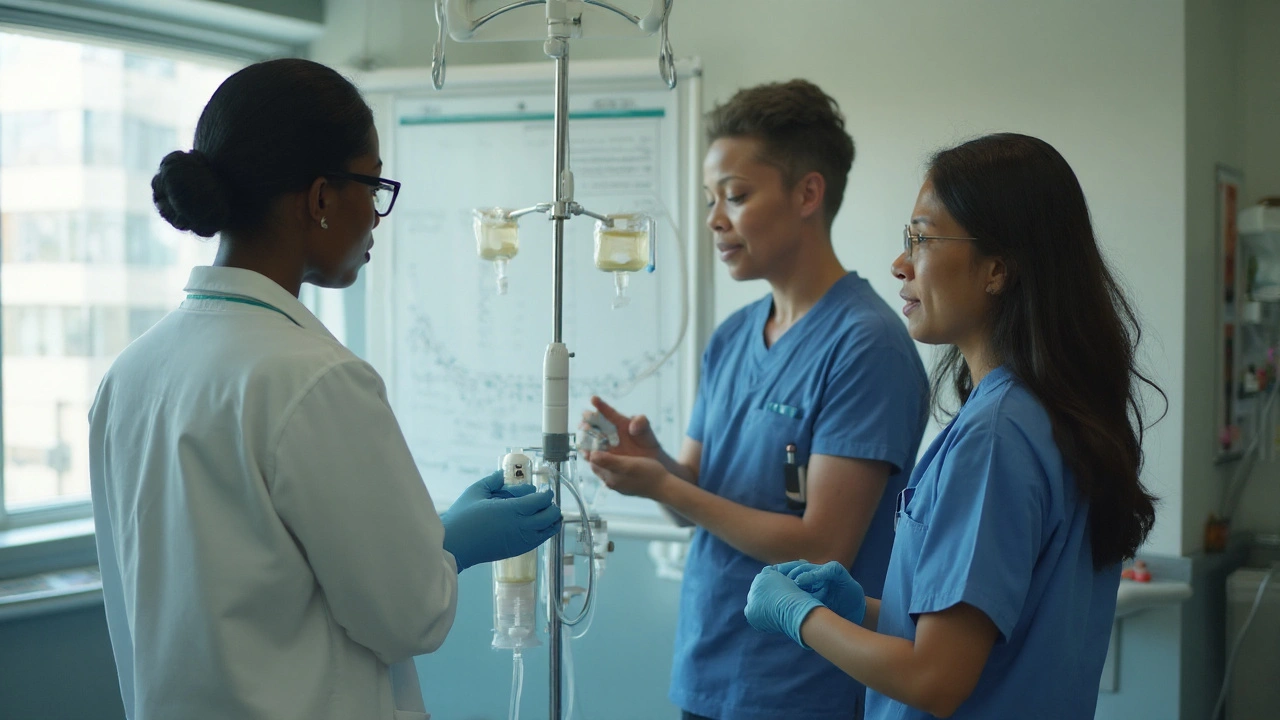Post‑Transplant Cyclophosphamide: Quick Guide for Patients and Clinicians
If you’ve heard the term “post‑transplant cyclophosphamide” (PTCy) and wonder what it really means, you’re not alone. It’s a high‑dose chemotherapy given right after a stem‑cell or bone‑marrow transplant to lower the risk of graft‑versus‑host disease (GVHD). In plain language, it helps the new immune cells settle in without attacking the host’s body.
Why does this matter? GVHD can be life‑threatening, causing skin rashes, liver problems, and gut inflammation. By adding PTCy, doctors aim to keep those complications at bay while still allowing the transplant to fight the original disease, whether it’s leukemia, lymphoma, or a genetic disorder.
Why Use Post‑Transplant Cyclophosphamide?
Traditional GVHD prevention mixes several drugs that suppress the immune system. PTCy works differently: a single, high dose of cyclophosphamide given on days +3 and +4 after the transplant targets rapidly dividing T‑cells that would cause GVHD, while sparing the stem‑cells that are needed for recovery. Studies show that this approach can cut severe GVHD rates by half compared with older regimens.
Another upside is flexibility. PTCy works for both related and unrelated donors, and even for haploidentical (half‑matched) transplants, which expands the pool of potential donors dramatically. That means more patients get a life‑saving transplant sooner.
Practical Dosing and Safety Advice
The usual dose is 50 mg/kg body weight, given intravenously over a few minutes on each of the two post‑transplant days. Your transplant team will adjust the exact amount based on kidney function, liver health, and other meds you’re taking. It’s crucial to stay hydrated – plenty of fluids help the body clear the drug faster and can lessen bladder irritation.
Side effects are real but manageable. The most common issues are nausea, vomiting, and low blood counts (especially neutropenia). Antiemetics are standard, and growth‑factor support (like filgrastim) helps the bone marrow bounce back. Keep an eye on your urine – cyclophosphamide can irritate the bladder, so doctors often prescribe a short course of a protective agent like mesna.
Another safety point: infections. Because PTCy suppresses certain immune cells, you’ll be more vulnerable to bacterial, viral, and fungal infections for a few weeks. Hand hygiene, avoiding crowded places, and following any prophylactic antibiotic or antifungal prescriptions are key to staying out of the hospital.
Regular lab checks are part of the routine. Your team will monitor blood counts, liver enzymes, and kidney markers at least twice a week in the first month. Any sudden drop in platelets or rise in creatinine should be reported immediately.
Finally, talk openly with your care team about any other medications, supplements, or over‑the‑counter drugs you’re using. Some substances can interact with cyclophosphamide and increase toxicity. A quick check with a pharmacist can prevent nasty surprises.
In short, post‑transplant cyclophosphamide is a powerful tool that has reshaped the transplant landscape. When used correctly, it lowers GVHD risk, widens donor options, and can improve overall survival. Staying hydrated, managing side effects, and keeping close contact with your medical team are the best ways to make the most of this therapy.
Cyclophosphamide in Bone Marrow Transplant: Uses, Dosing, and Risks (2025 Guide)
- Cheryl Moran
- September 2, 2025
- 15 Comments
A clear 2025 guide to cyclophosphamide in bone marrow transplantation-when it’s used, dosing, PTCy, side effects, and practical, evidence-backed tips.
read more